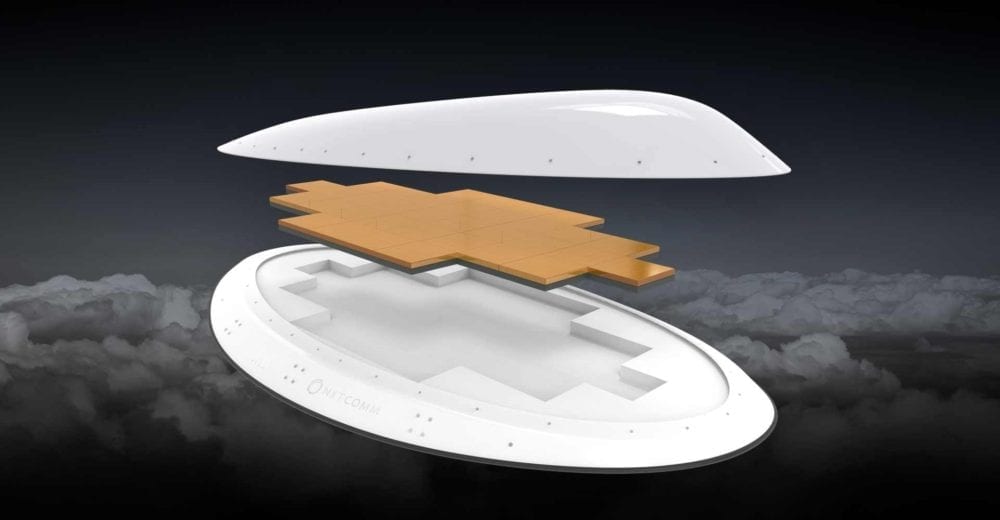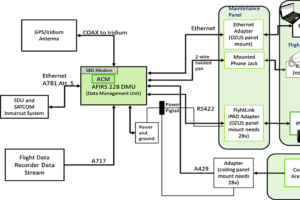NXTCOMM CEO Talks New Eutelsat Agreement and Electronically Steered Antenna Testing
By Woodrow Bellamy III | December 4, 2020
Send Feedback | @WBellamyIIIAC

David Horton is co-founder and CEO of NXT Communications Corporation (NXTCOMM).
Over-the-air testing is underway for NXTCOMM’s disruptive new electronically steered antenna (ESA) technology with flight testing expected to begin next year, the wireless connectivity company’s co-founder and CEO David Horton told Avionics International during a recent interview.
In June, NXTCOMM introduced AeroMax, it’s new flat-panel satellite antenna that the company believes could disrupt multiple mobility markets with its modular design. On October 28, NXTCOMM signed a capacity agreement with Eutelsat Communications to use their E117WA satellite for over the air testing.
Horton said he expects AeroMax production to begin next year.
“Over the air testing is ongoing, and it’s really around our sub arrays and configurations that support multiple form factors for multiple end-users,” Horton said. “We’ll most likely be into low rate initial production by the end of Q2 2021, and then full-rate production in the second half of 2021. We are finalizing a few things including setting up production, workstations, assembly testing all of the things that we as antenna people have to do in order to satisfy the [Federal Aviation Administration] FAA certification and [Federal Communications Commission] FCC’s licensing requirements.”

In October, NXTCOMM signed a satellite capacity leasing agreement with Eutelsat. (NXTCOMM)
Horton further explained how NXTCOMM plans to disrupt the IFC antenna market, by pointing to the unique design their antenna will feature. Developed using the Georgia Tech Research Institute’s (GTRI) patented fragmented aperture has already demonstrated its ability to provide satellite connectivity to military aircraft.
Whether vehicle or aircraft-mounted, AeroMax features no moving parts and offers dynamic instantaneous bandwidth utilizing the full two gigahertz on the face of the antenna or the side that faces satellites. Described by Horton as a “lego,” manufactured as a printed circuit board that can be modified on an aircraft by aircraft basis.
The antenna is being developed as both an ARINC 791 retrofit drop-in configuration and as a forward-fit antenna to in-production aircraft.
“Our Lego is a small form factor printed circuit board that is roughly 25 by 25 centimeters. In essence, what we’re able to do is take that one Lego and when a customer says they need the performance of the antenna to feature X-amount of throughput, we scale the number of Legos needed to enable that together and productize that,” Horton said.
“We don’t need to go back to the drawing board to re-design antennas every time a customer wants an antenna,” he added.

The AeroMax electronically steered array shown in an industry-standard radome. (NXTCOMM)
According to NXTCOMM’s Oct. 28 press release, under their satellite capacity leasing agreement with Eutelsat, they will also “offer satellite capacity to customers seeking a differentiated connectivity experience not available from existing service providers.”
“We know that there are many customers that would maybe like a solution such as ours to be turnkey. In the event that we receive such a customer request, we’ll have to take that on a case by case basis,” Horton said. “Right now, however, it’s a little early for us to be discussing a potential business model with regards to satellite capacity.”
NXTCOMM’s antenna technology is being developed at its 10,000-square-foot production facility in Cherokee County, Georgia. The company also intends to “introduce other products and services to comms-on-the-move markets in the next year” and will add 50 full-time positions, half of which will be specialized engineering roles, in the next 18 months, according to a June 29 press release.
Over the next few months, NXTCOMM will shift its focus to ongoing testing. “I mean, it’s one of those things where you just continually test the product and really truly understand the nuances of what electronically scan versus mechanical or, or hybrid solutions are all about,” he said. “But the testing will be ongoing for quite a while.”







